Fatu Hiva
Fatu Hiva is only accessible by boat as there is no landing strip. It is therefore, the most unspoiled of all the Marquesan islands. On entering Hanavave Bay, you are greeted to dark green cloaked steep-sided mountains, with towering basalt cones near the head of the bay. The view is simply breath taking and very Jurassic Park-like. Sadly, we arrived when the bay was shrouded in low clouds, and it was dull and overcast. However, it didn't detract from its beauty. The huge basaltic cones resemble giant phalluses protruding out of the ocean. The bay was originally, and rather aptly, named Baie des Verges (Bay of Penises). Outraged missionaries that arrived later, promptly added a redeeming 'i' to make the name Baie des Vierges (Bay of Virgins). On one of the phalluses, you could argue that you can see the face of the Virgin Mary.
There are very few facilities ashore, but most yachties come to climb the the steep mountain behind the village to get fantastic views of the anchorage. There is also a rather magnificent 200 foot waterfall within easy reach, where you can take a dip in the cool water of the pool at its base.
Money is no good to you on Fatu Hiva as the locals prefer to barter in exchange for their goods. They are happy to barter for cigarettes and alcohol (although this is not recommended) or rope, fishing gear or perfume and other items. Fruit trees can be found all over the Marquesas, growing anything from oranges and mangoes to starfruit and avocados. One of the largest fruit you will see is the Pamplemousse, which is a type of large grapefruit. It was introduced to the islands from Sarawak in Borneo in 1930. They are similar to a grapefruit but taste a bit sweeter. They are also huge. Apparently some can grow to the size of a head. We simply had to try some. We found a local man pottering in his garden which had around 20 trees growing pamplemousse, so we stopped and asked if we could have some in exchange for some goods. He happily obliged and picked us four ripe ones. He refused to take anything for them though and wished us a good day. We were also given some oranges by another local lady. Everyone we came across was so friendly and amazingly seemed to understand our terrible French.
Another thing you will see on all the islands, is chunks of coconut flesh being dried out in the sun. This dried meat is known as copra and after processing, produces coconut oil. Aside from being used as a cooking oil, it is also used in cosmetics and soap, hair oil and massage oil. The dried copra is sent to Tahiti to be processed, and is the main income for the islands.
On the way to Fatu Hiva, Steve noticed the water flow from the exhaust was a little less powerful than usual, and so he decided to check the impeller. Sure enough, a few of the splines were missing, so he set about replacing the impeller and locating the missing splines. This involved removing the cover for the heat exchanger and pleased to say, all the wayward splines were recovered.
On our second day on Fatu Hiva, we decided to get up early and make the hike up the mountainside, before it got too hot. We were told it would take roughly and hour, so we reckoned it would take us a bit longer. The beginning of the hike was through the village, and the road wound its way slowly upwards. However, it soon became very steep and was hard going. We made a few stops along the way to take in the incredible views. Once at the top, we could get a view of the anchorage from above and could see Azzy lying quite happily at anchor. The trip downhill was almost worse than the way up, and you could definitely feel the burn on the calf muscles! Just before we reached the village again, we took the detour to find the waterfall. When we got there, there were the crews from other yachts in the anchorage all taking a dip in the pool at the bottom.
On walking back through the village, we saw a sign indicating where we could buy wood carvings. We were keen to get a carved tiki, so set off to investigate. We found a young family sitting in their backyard and the man invited us in whilst he fetched his wares. His speciality was carving whale bone. His designs were beautiful but we had to explain we were headed to New Zealand, and bone is a prohibited item there. We asked if he had any wood carvings and he said his father was the wood carver, but was currently in Tahiti at a craft fair. He said his uncle also carved wood but would not be around until that night. He invited us along to the local sports hall that evening where he would be practicing some dance routines for the upcoming Arts Festival in Ua Poa in December. He would then introduce us to his uncle afterwards.
We got back to Azzy in time for a late lunch and a siesta, before returning to shore that evening. The sports hall was packed with around 50 locals all practicing their traditional dance for the festival. There was an accompanying group of drummers too. Many other cruisers had turned up to watch and although the dancers were not in costume and it was obviously one of the first rehearsals they had done, it was still exciting to witness. Many of the moves the men made were Haka-like. It was very energetic and we really hope they do well at the Festival.
As promised, our young friend took us to meet his uncle after the practice, and we perused his collection of carved tiki. We settled on a small rosewood male tiki and his uncle was very pleased with the deal we struck.
It was time to move on again. This time we were going to Tahuata, about a 7 hour sail away.
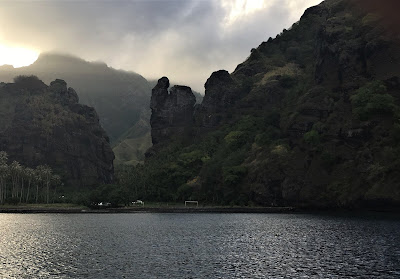
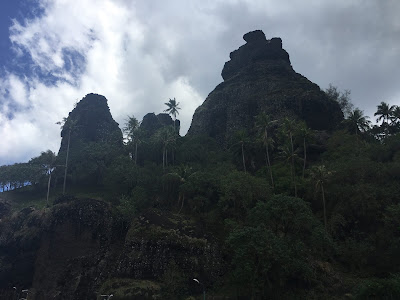
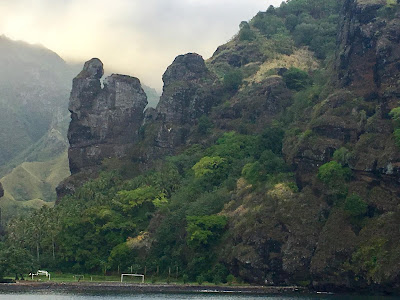



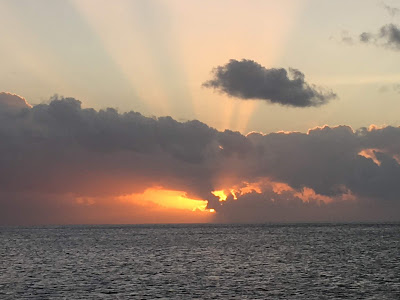
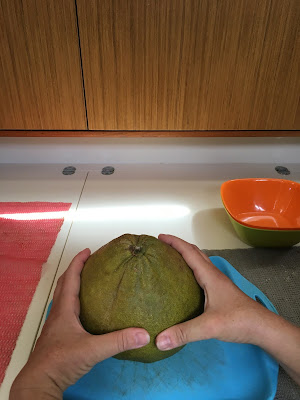
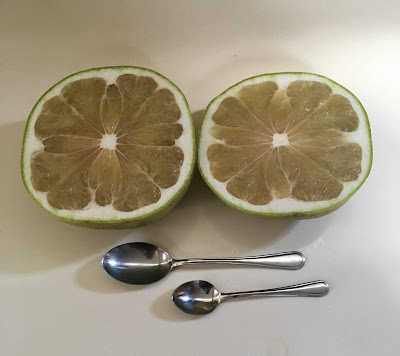






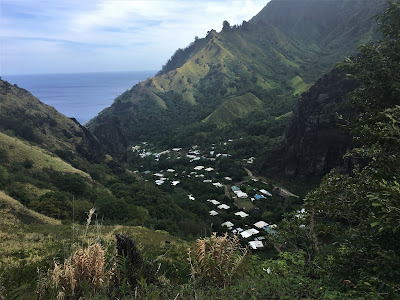
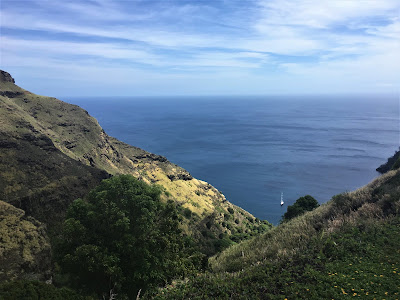
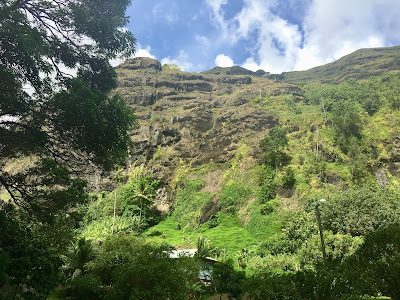
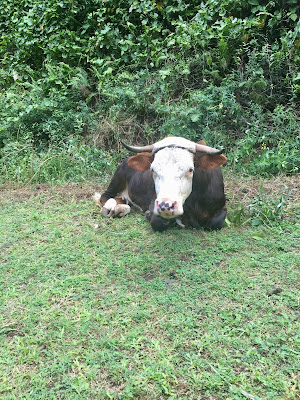
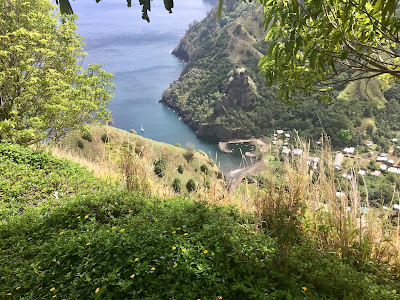
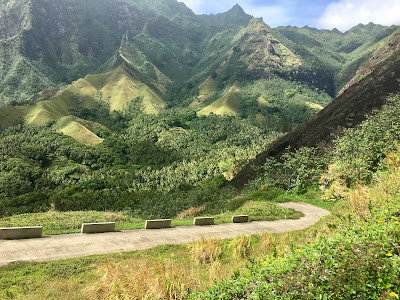
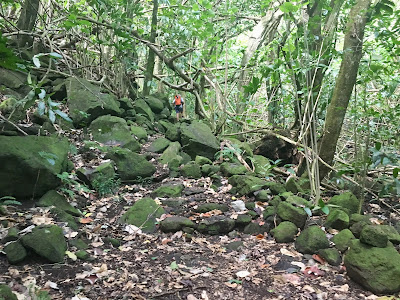
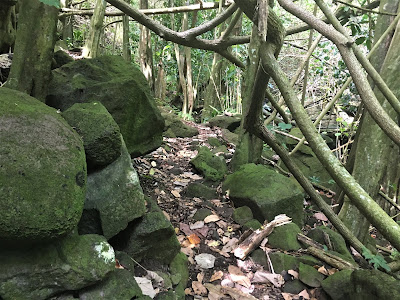
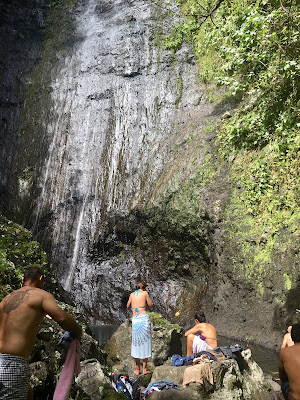
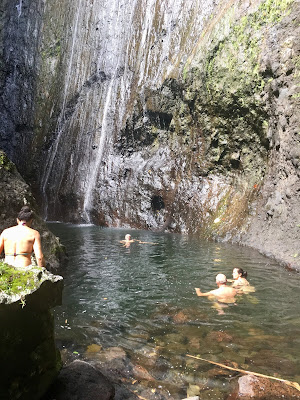
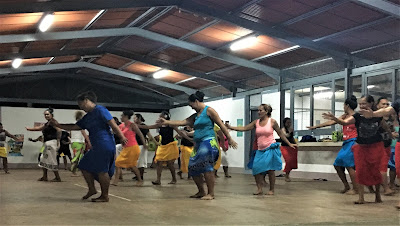
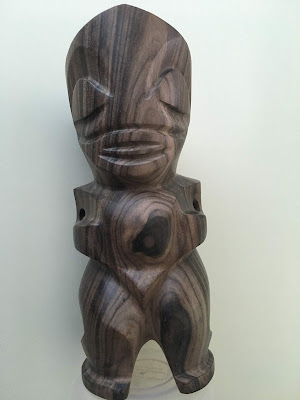
No comments:
Post a Comment